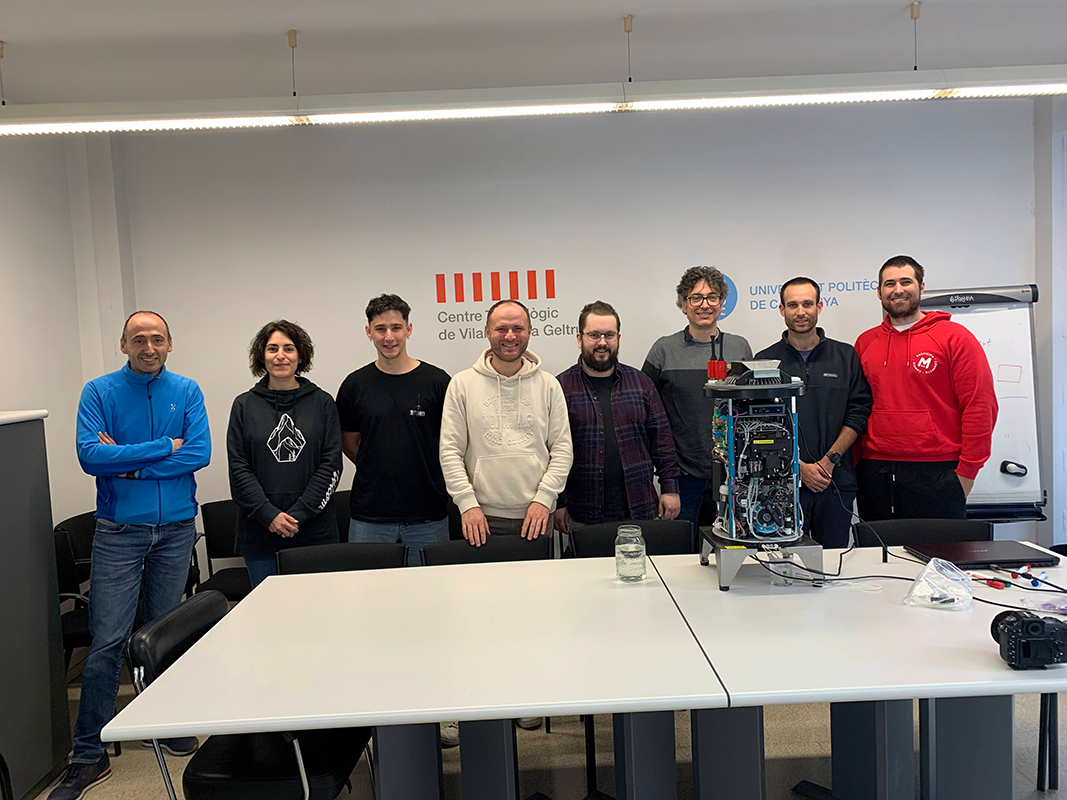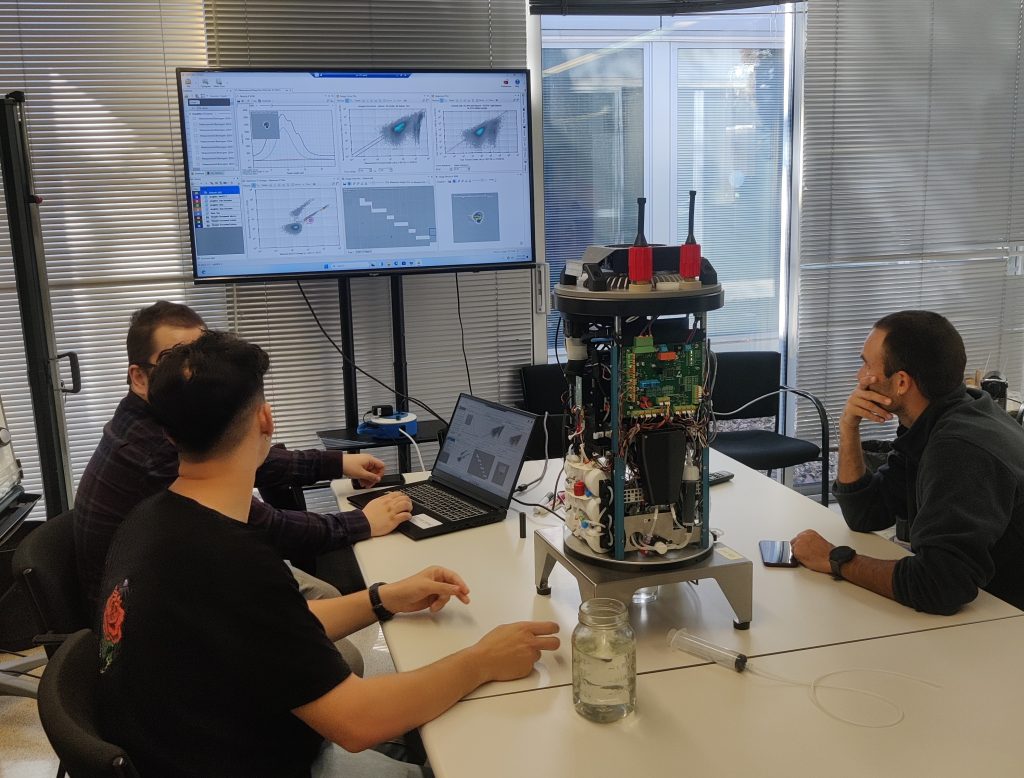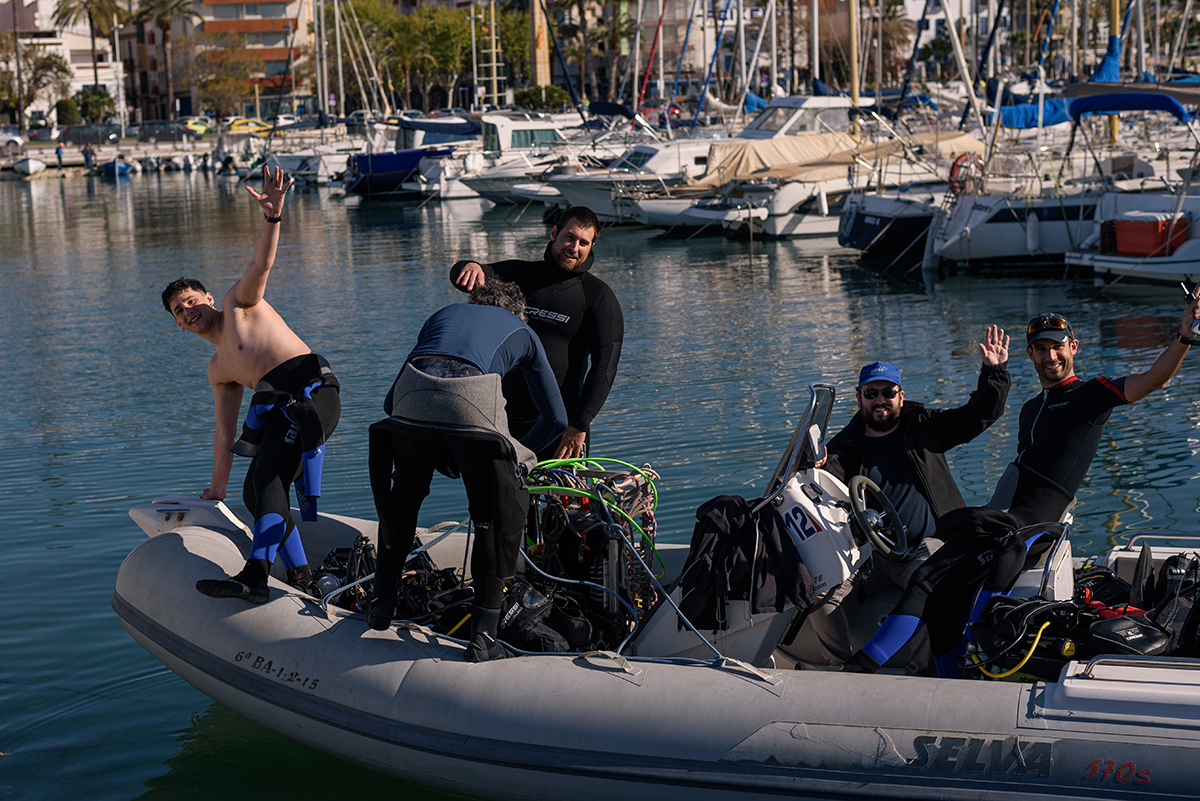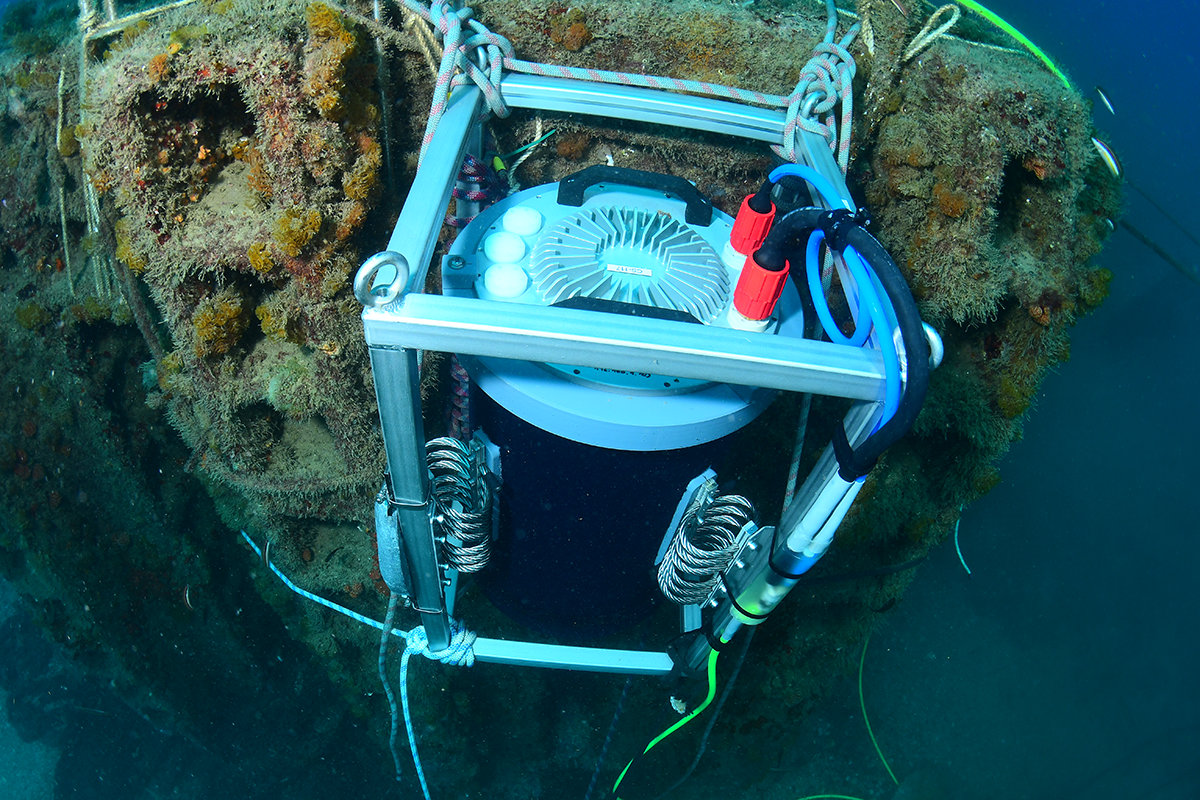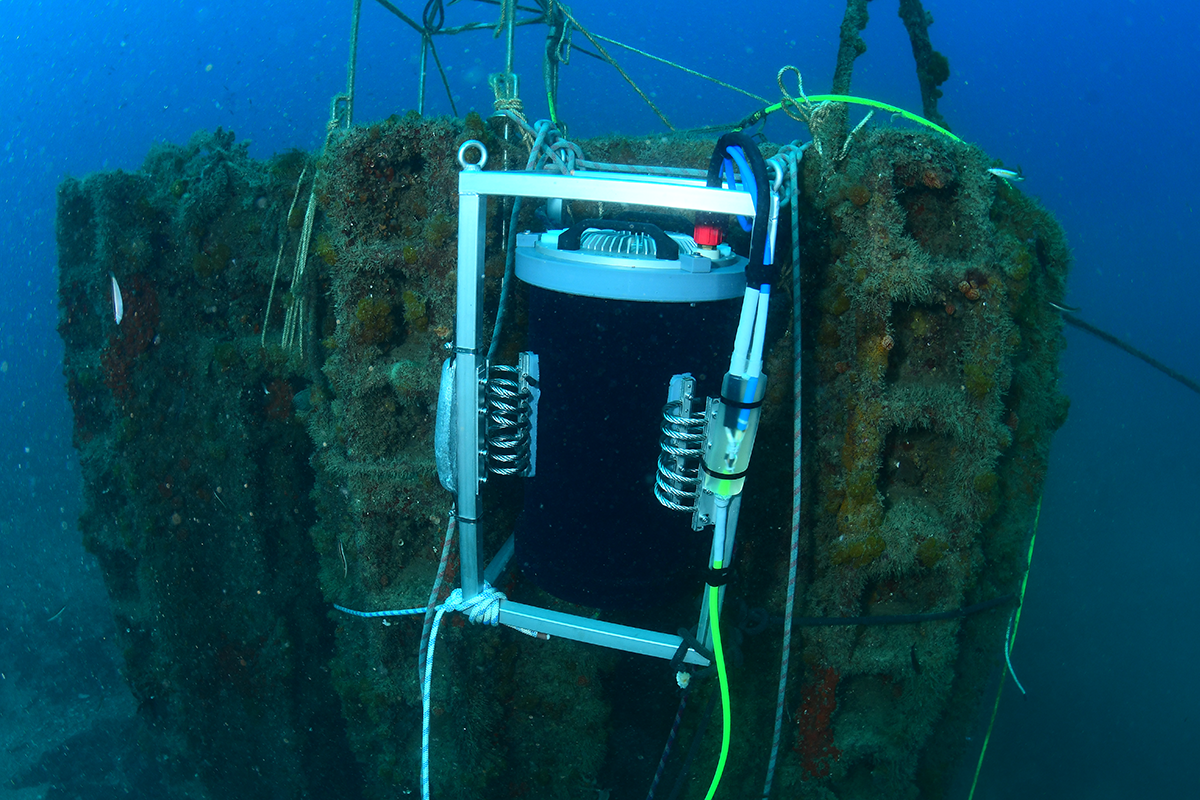On April 2024, during the first year of the ANERIS project, SARTI-UPC researchers together with researchers from the Institut de Ciències del Mar (ICM) and engineers from CytoBuoy deployed the CytoSub at the EMSO OBSEA observatory. This instrument offers solutions for the analysis and classification of microorganisms and particles in water and complex media. It provides a more holistic view on the dynamics of the microworld by combining speed, information and size range.
The CytoSub is an imaging flow cytometer which analyses microorganisms and particles in water, such as Phytoplankton. It collects in depth information on microbe communities and diversity, viability, germination, and physiology. It can detect changes and notice trends. It monitors the abundance and growth of phytoplankton or zooplankton, or harmful algae blooms. The instrument can run autonomously for multiple months on a set schedule to measure. The output of the measurements are single particle footprints and images. Unique for the CytoSub is the wide particle range that can be measured. For the ANERIS Project one of the outputs is the images that will be used for the data pipeline developed by Vlaams Institute for the Sea (VLIZ) in their AIES-PHY, Automatic Information Extraction System for PHYtoplankton images.
During the first year of the ANERIS project, the CytoSub was integrated to the OBSEA network, fully tested in a pressure tank at UPC facilities and deployed at 18 meters depth with the CytuBuoy engineer’s supervision. On April 9th and 10th, coinciding with the UN Ocean Decade, an on-site training was conducted at UPC facilities to train its researchers in the use, maintenance, and exploitation of data provided by CytoSub. Subsequently, on April 11th, the instrument was successfully deployed at a depth of 18 meters connected to the OBSEA observatory, which provides power and real-time data. Since that day, the instrument has been continuously measuring particles present in the area with a 3-hour cycle.
Summary video here


